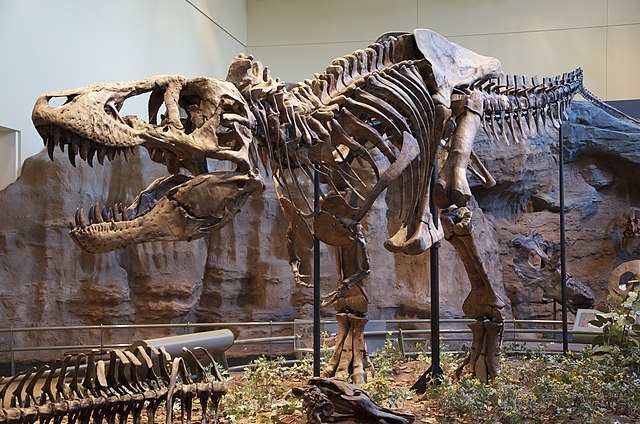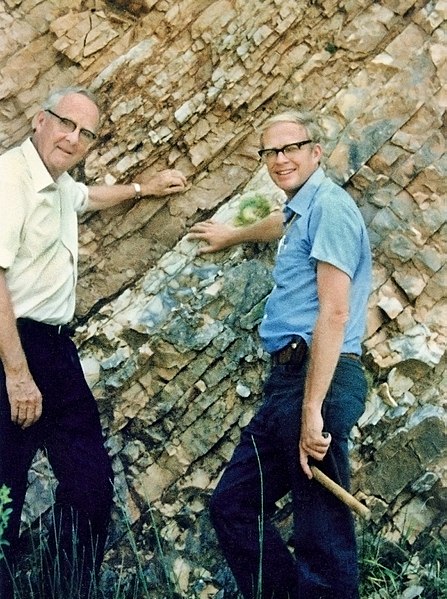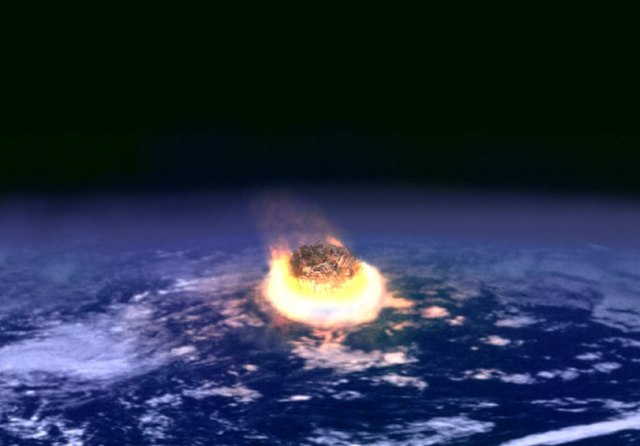Cretaceous–Paleogene extinction event
The Cretaceous–Paleogene (K–Pg) extinction event, also known as the Cretaceous–Tertiary (K–T) extinction, was a sudden mass extinction of three-quarters of the plant and animal species on Earth, approximately 66 million years ago. The event caused the extinction of all non-avian dinosaurs. Most other tetrapods weighing more than 25 kilograms also became extinct, with the exception of some ectothermic species such as sea turtles and crocodilians. It marked the end of the Cretaceous period, and with it the Mesozoic era, while heralding the beginning of the current era, the Cenozoic. In the geologic record, the K–Pg event is marked by a thin layer of sediment called the K–Pg boundary or K–T boundary, which can be found throughout the world in marine and terrestrial rocks. The boundary clay shows unusually high levels of the metal iridium, which is more common in asteroids than in the Earth's crust.

Discoscaphites iris ammonite from the Owl Creek Formation (Upper Cretaceous), Owl Creek, Ripley, Mississippi
Rudist bivalves from the Late Cretaceous of the Omani Mountains, United Arab Emirates. Scale bar is 10 mm.
Tyrannosaurus was among the dinosaurs living on Earth before the extinction.
Hell Creek Formation
An extinction event is a widespread and rapid decrease in the biodiversity on Earth. Such an event is identified by a sharp fall in the diversity and abundance of multicellular organisms. It occurs when the rate of extinction increases with respect to the background extinction rate and the rate of speciation. Estimates of the number of major mass extinctions in the last 540 million years range from as few as five to more than twenty. These differences stem from disagreement as to what constitutes a "major" extinction event, and the data chosen to measure past diversity.
Trilobites were highly successful marine animals until the Permian–Triassic extinction event wiped them all out.
Badlands near Drumheller, Alberta, where erosion has exposed the Cretaceous–Paleogene boundary.
Luis (left) and Walter Alvarez (right) at the K-Pg boundary in Gubbio, Italy in 1981. This team discovered geological evidence for an asteroid impact causing the K-Pg extinction, spurring a wave of public and scientific interest in mass extinctions and their causes
An artist's rendering of an asteroid a few kilometers across colliding with the Earth. Such an impact can release the equivalent energy of several million nuclear weapons detonating simultaneously.








